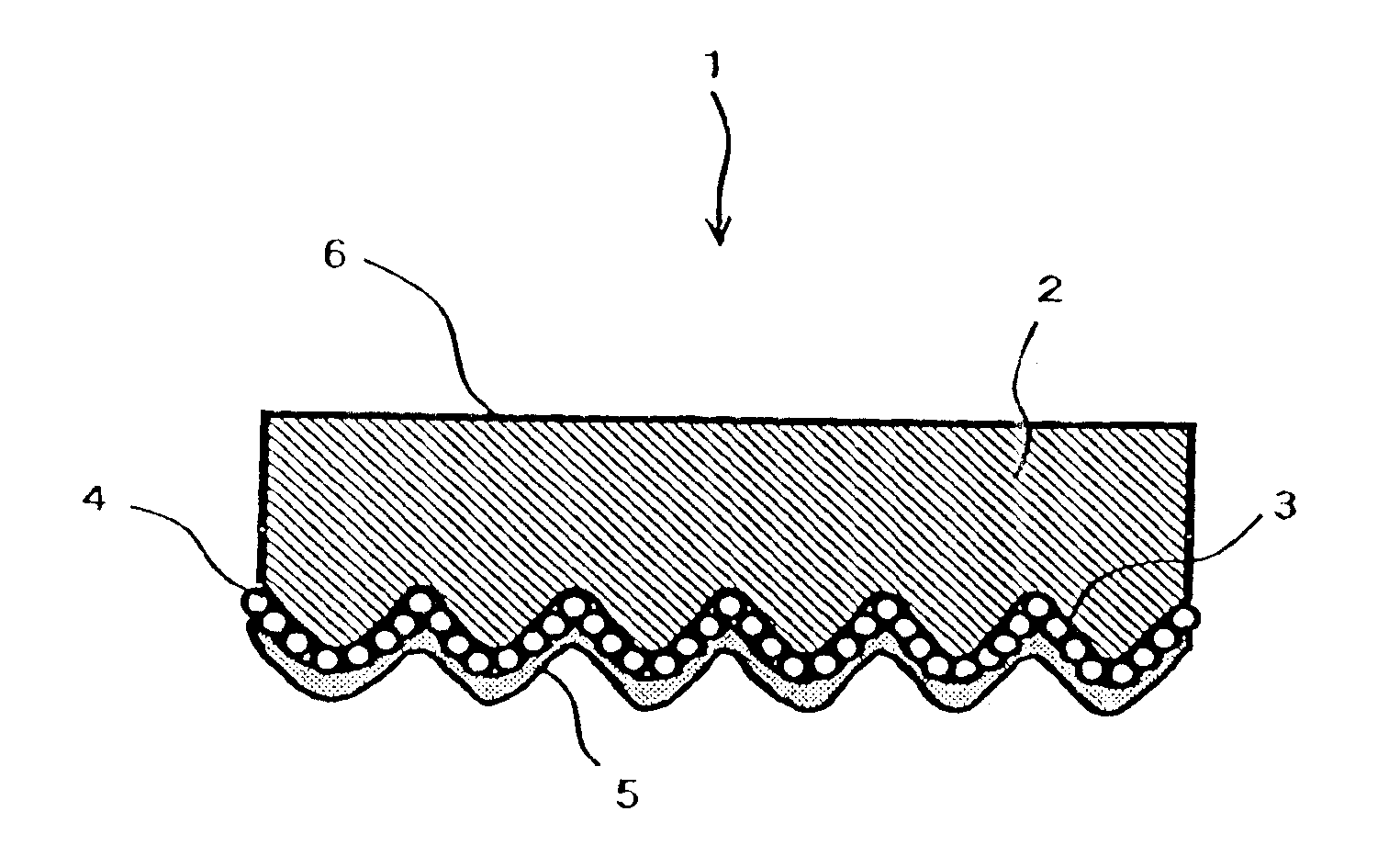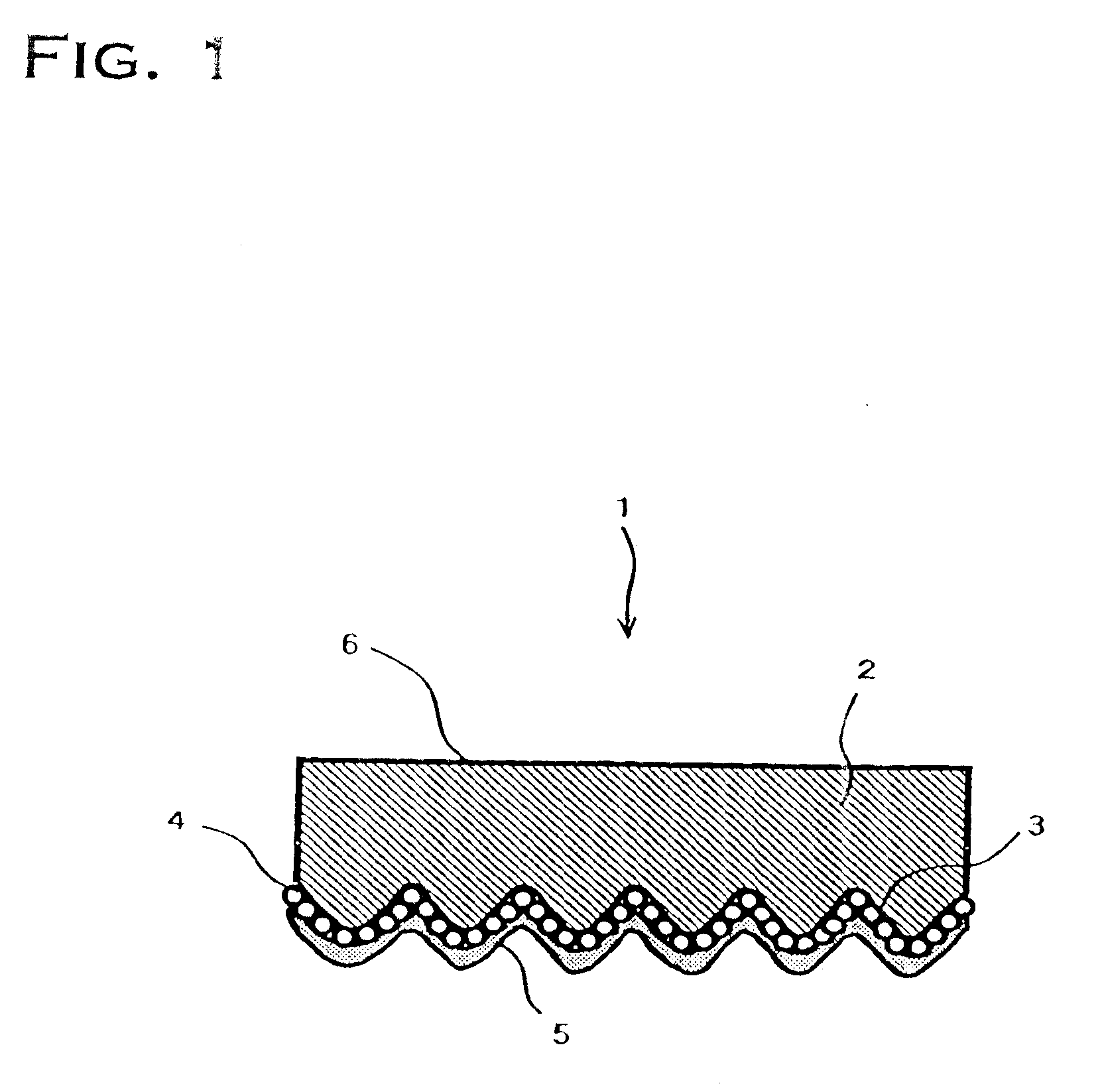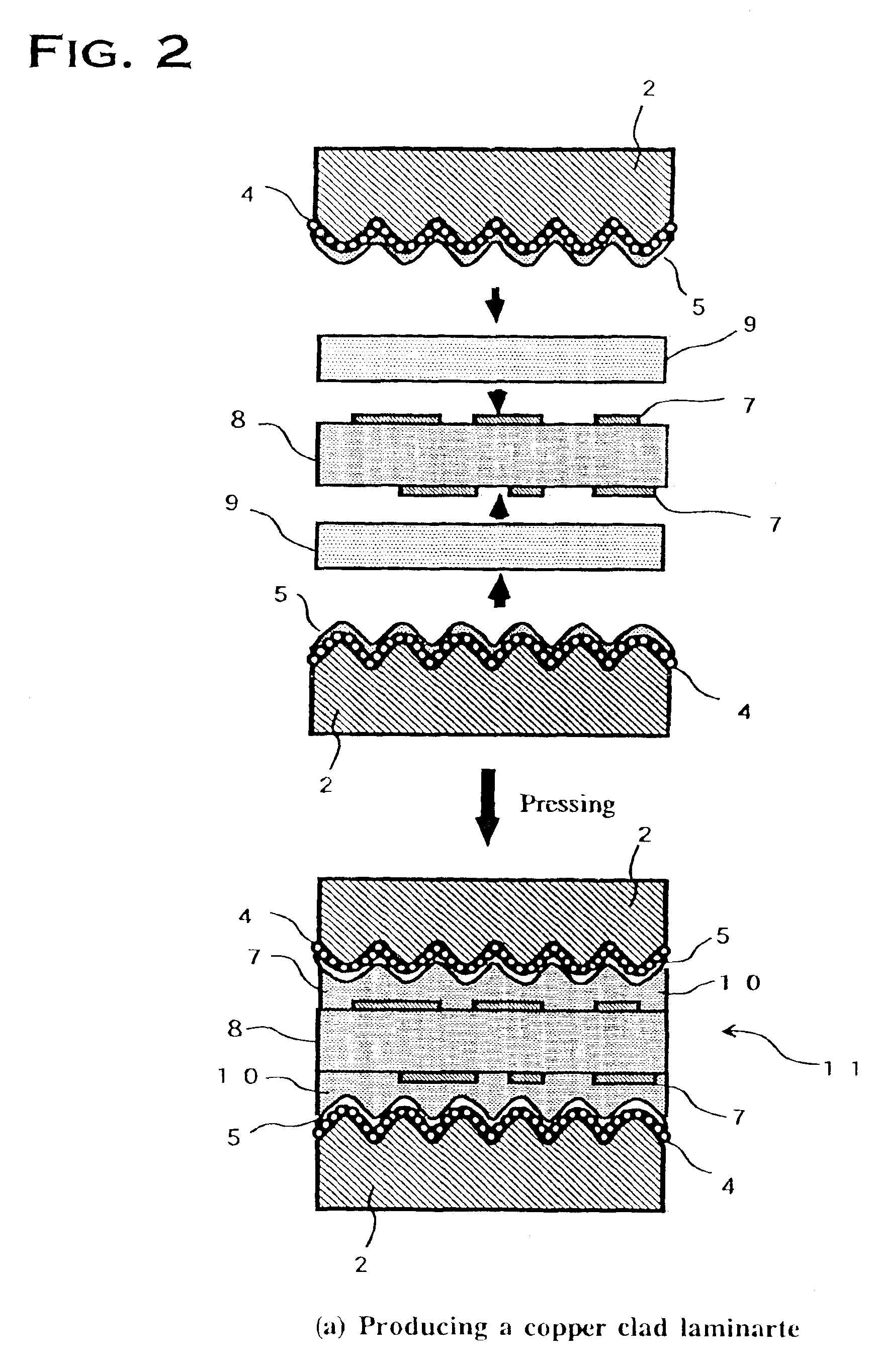Copper foil for printed-wiring board and copper-clad laminate using copper foil for printed-wiring board
a technology of copper foil and printed wire, which is applied in the field of copper foil for printed wire and copper foil for copperclad laminate, can solve the problems of increasing generation, difficult processing, and no means for purposely improving chemical resistance and heat resistance, and achieve excellent ul heat resistance
- Summary
- Abstract
- Description
- Claims
- Application Information
AI Technical Summary
Benefits of technology
Problems solved by technology
Method used
Image
Examples
example 1
[0045]In this Example, the steps of producing a printed-wiring board using a copper foil for printed-wiring board comprising an alloy layer of nickel and zinc on the matte side of an electrodeposited copper foil will be described. First, production of the copper foil for printed-wiring board 1 will be described with reference to the drawings. Here, an electrodeposited copper foil having a cross section shown schematically in FIG. 1 for use in producing a copper foil having nominal thickness of 18 μm, which had not been subjected to surface treatment (hereinafter referred to as “untreated copper foil”) was used. Then, a so called surface treatment apparatus was used to subject this untreated copper foil 2 to nodular treatment and surface treatment for forming the nickel-zinc layer.
[0046]In the surface treatment apparatus, copper microparticles 4 are first deposited on the surface of the matte side 3 of the untreated copper foil 2 under burnt copper plating conditions. For the burnt c...
example 2
[0054]In this Example, the steps of producing a printed-wiring board with the use of a copper foil for printed-wiring board comprising an alloy layer of nickel and zinc on the matte side of an electrodeposited copper foil will be described. First, production of the copper foil for printed-wiring board 1 will be described with reference to the drawings. Here, an electrodeposited copper foil having a cross section shown schematically in FIG. 1 for use in producing a copper foil having nominal thickness of 18 μm, which had not been subjected to surface treatment (hereinafter referred to as “untreated copper foil”) was used. Then, a so called surface treatment apparatus was used to subject this untreated copper foil 2 to nodular treatment and surface treatment for forming the nickel-zinc layer.
[0055]In the surface treatment apparatus, copper microparticles 4 are first deposited on the surface of the matte side 3 of the untreated copper foil 2 under burnt copper plating conditions, and s...
example 3
[0058]In this Example, the steps of producing a printed-wiring board using a copper foil for printed-wiring board comprising two layers, namely nickel and zinc layers on the nodular treatment side of an electrodeposited copper foil will be described. First, production of the copper foil for printed-wiring board 1 will be described with reference to the drawings. Here, an electrodeposited copper foil having a cross section shown schematically in FIG. 8 for use in producing a copper foil having nominal thickness of 18 μm, which had not been subjected to surface treatment (hereinafter referred to as “untreated copper foil”) was used. Then, a so called surface treatment apparatus was used to subject this untreated copper foil 2 to nodular treatment and surface treatment for forming the nickel and zinc layers.
[0059]In the surface treatment apparatus, copper microparticles 4 are first deposited on the surface of the matte side 3 of the untreated copper foil 2 under burnt copper plating co...
PUM
| Property | Measurement | Unit |
|---|---|---|
| thickness | aaaaa | aaaaa |
| width | aaaaa | aaaaa |
| boiling point | aaaaa | aaaaa |
Abstract
Description
Claims
Application Information
 Login to View More
Login to View More - R&D
- Intellectual Property
- Life Sciences
- Materials
- Tech Scout
- Unparalleled Data Quality
- Higher Quality Content
- 60% Fewer Hallucinations
Browse by: Latest US Patents, China's latest patents, Technical Efficacy Thesaurus, Application Domain, Technology Topic, Popular Technical Reports.
© 2025 PatSnap. All rights reserved.Legal|Privacy policy|Modern Slavery Act Transparency Statement|Sitemap|About US| Contact US: help@patsnap.com



